The first thing you notice when you enter Fringe, a new cafe in Paris’ Le Marais neighborhood, are the lamps. From Dutch designers Margje Teeuwen and Erwin Zwiers, they are like clouds hanging from the ceiling, providing an interior detail that sets the space apart. Perhaps the next thing noticed are the cameras perched on the bookcase by the entry; soon you’ll see this is not just a coffee lover’s space, it’s also a photographer’s space.
Jeff Hargrove, a photographer by trade, opened Fringe during the summer of 2016; it was a project he had been planning for years: not just a destination for coffee, but a hub for independent artists and creatives. (Full disclosure: in 2015, Hargrove and I published a book together called Paris Coffee Revolution.)
Fringe is a culmination of all of the things that Hargrove is passionate about: food, coffee, and photography. “It’s a very personal space,” says Hargrove. When I visited this fall, large-scale photos covered the walls, Hargrove’s personal work documenting Danish textile artist Karin Carlander, whose linen napkins are used in the cafe and are also for sale.
Instead of framing the photos, Hargrove printed them on wallpaper, making them easy to hang as well as take down. The result is a collection of photos that feels very much a part of the space, as if they have always been there, even if they will eventually be swapped out for others. Hargrove’s goal is to feature not only photography but also artists who can paint or draw directly on the walls. “I wanted to create a space that is changing…not always the same thing.” Above all, Hargrove says he wants Fringe “to be a place where your senses are awakened.”
That sensory stimulation comes in many forms: what people are drinking, what people are eating, what people are looking at, what people are reading. Fringe supplies a selection of photography books, as well as independent magazines like Drift and Caffeine. Hargrove mentions that Fringe is regularly frequented by local writers, photographers, photo agents, and other creatives. “The kind of people I like to talk to,” says Hargrove.
My visit was a few weeks after Hargrove had put together an exhibition of photos of Carlander’s textile production to correspond with Danish Design Week. In honor of that, he had brought in a guest espresso from Danish roaster The Coffee Collective, which ended up being so popular that he kept it on the menu. “I will offer The Coffee Collective Kieni as the basic espresso, and I will be offering a guest espresso that will change every month, starting with L’Arbre à Café,” says Hargrove. Options for filter coffee will be rotating every month as well; the current offering is a Suke from Ethiopia roasted by L’Arbre à Café.
The menu is seasonal and mostly stocked with local ingredients, yet it has a slightly Nordic feel—it could be the open-faced sandwiches with smoked salmon and mackerel—which speaks to Hargrove’s attraction to a Scandinavian aesthetic, as well as the fact that the cook is Danish. “I didn’t want a professional cook, but someone who was interested in food,” says Hargrove, pointing out that hiring someone without professional food training makes it a little bit easier to break out of the traditional box of what can be served, and allows more room for creativity. Above all, Hargrove wants to be sure that he offers something different than what’s already available in Parisian coffee.
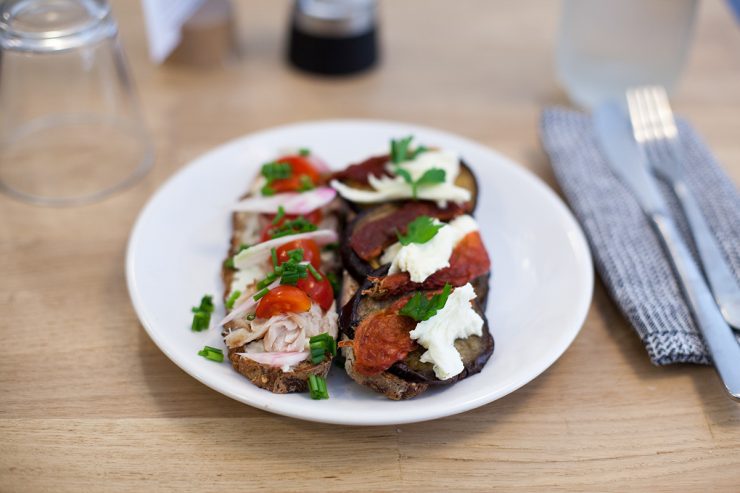
Smoked-mackerel (left) and eggplant, sundried tomatoes and goat cheese open-face sandwiches at Fringe.
Fringe also distinguishes itself with the products it uses and serves; it is a thread that ties the whole place together, although it’s beautifully understated. You won’t find “Healthy!” slapped on the window, or “Eco-friendly!” plastered on the water bottles, but many of the business choices at Fringe are made with personal and environmental health in mind.
Hargrove avoids serving bottled water, and instead makes his own sparkling water from the tap and serves it in glass bottles. He buys organic produce as much as he can. The bread is made in-house, using whole wheat flour locally milled in the Île-de-France region. Even Fringe’s chai is house-made, from fresh spices. All of the food is made with whole ingredients, and while there are treats on the menu, the general aim is to serve food that’s good for you. “We don’t serve anything here that we don’t eat ourselves,” says Hargrove.
And Hargrove’s concerns extend beyond just the food on the customers’ plates. “We are all into not wasting food,” he says. For example, the pulp left over from juicing carrots is baked into sandwich buns, and after making almond milk, the remaining almonds make their way into a variety of recipes. “No waste, as organic as we can, and as responsible as we can,” says Hargrove.
The end result is a space that is both inviting and a bit different from other cafes. It’s easy to sit, drink a coffee, and be inspired by the creative work all around the coffee shop. And ultimately, that’s the end goal, because whether it’s through the photography on the walls, the magazines and books on the bookshelf, or the coffee served, “I want people to be stimulated,” says Hargrove.
Anna Brones (@annabrones) is a Sprudge.com staff writer based in the American Pacific Northwest, the founder of Foodie Underground, and the co-author of Fika: The Art Of The Swedish Coffee Break. Read more Anna Brones on Sprudge.
The post Coffee And Photography Converge At Fringe In Paris appeared first on Sprudge.
seen 1st on http://sprudge.com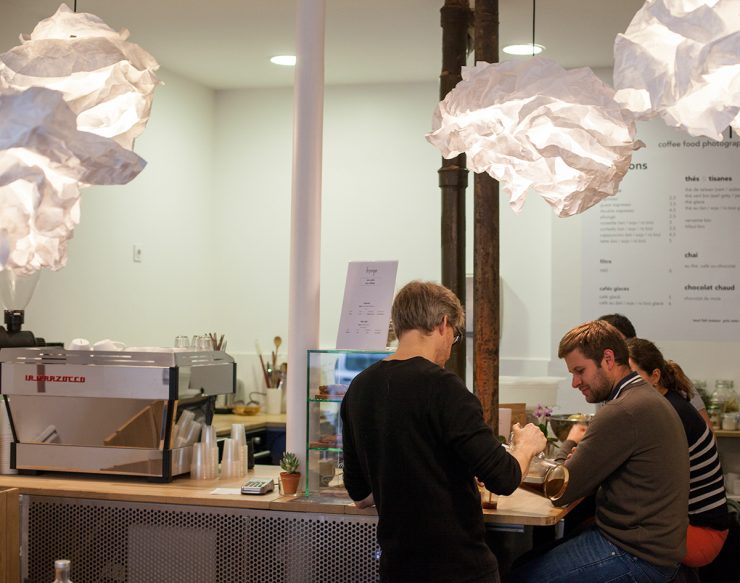
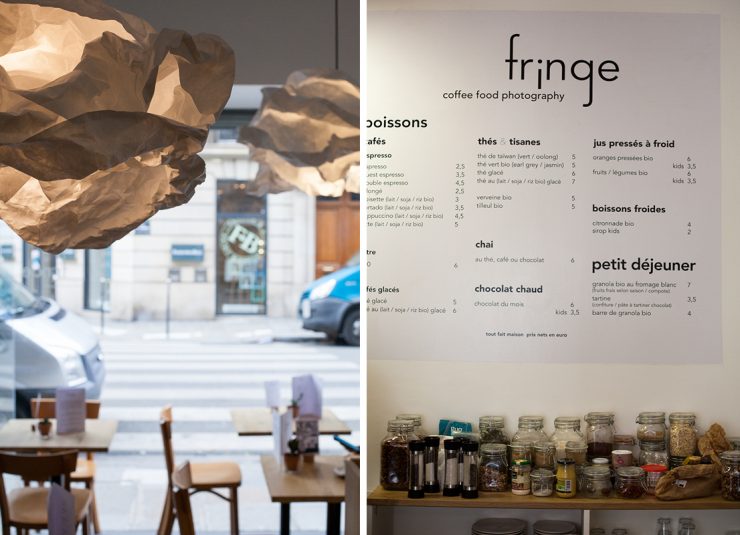
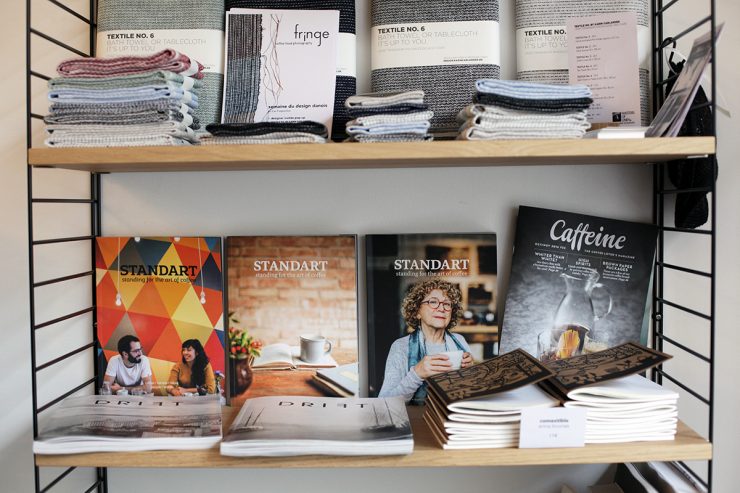
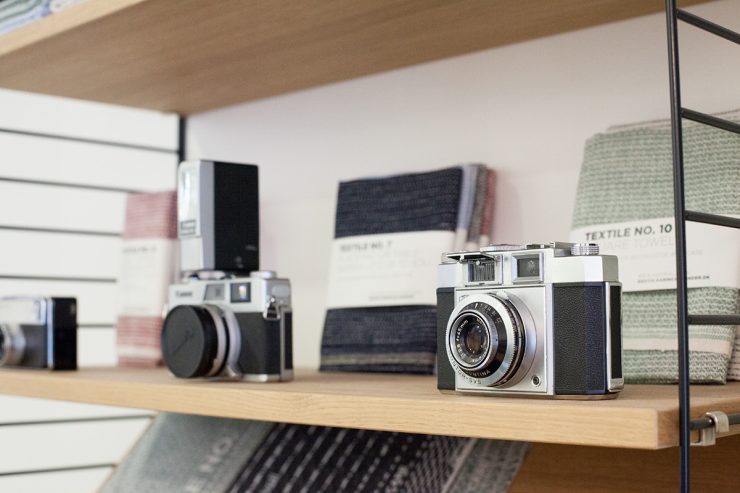
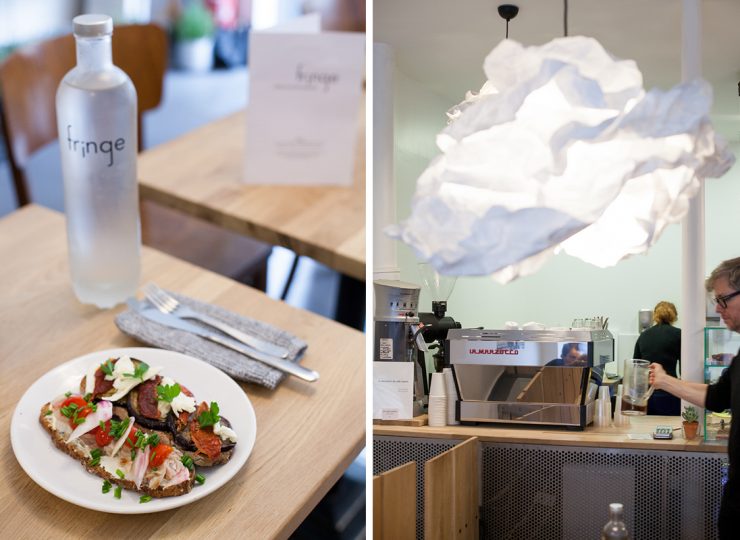
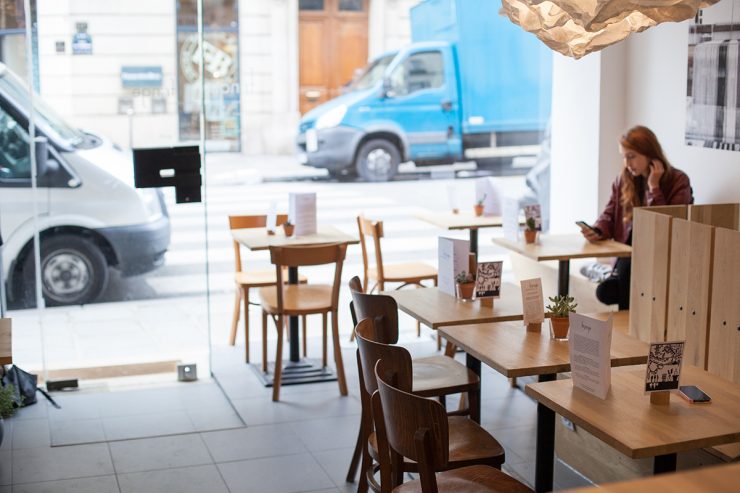
No comments:
Post a Comment